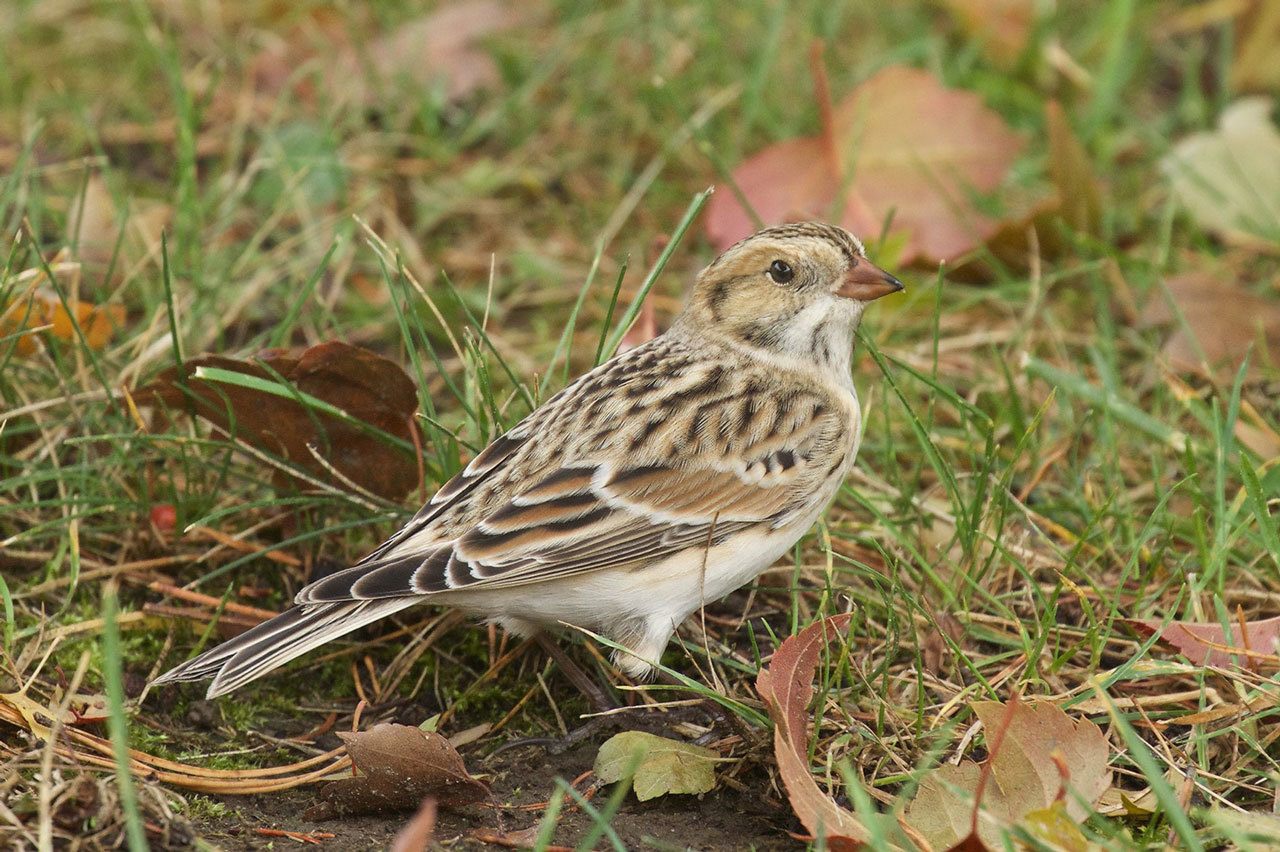I seldom feature birds in this column that are not easily found, so bear with me on this example of just that scenario. Although a very common bird in most of the country, we rarely see this bird out here except during the fall migration and into the winter months. So the birds we see are usually immature birds looking more like a Snow Bunting than the Longspur. I think I would have to find a nice quiet open field, lay down and listen for the song, then try to find the bird as it blends into the background. Ah, the challenge of the chase!
General Description: The first thing you notice about the Lapland Longspur is how much of its body is covered by streaks, lines, and patches of color, though the bird shown in the photo isn’t the best example of that. This bird is in what is known as 1st winter plumage; it hasn’t yet gone through a molt into its adult colors. It resembles the sparrows but is a bit larger at 6.25 inches in length, with a wingspan of nearly 12 inches, and weighing almost an ounce. The adult colors are more intense, especially the breeding male with a chestnut-colored back of the head and a black face and chest separated by a streak zig-zagging down from the top of the head to the top of the breast. The females lack the contrasting colors on the head but wear streaks and chestnut-colored patches. A stout seed-eater bill completes the picture.
Habitat: During the migration and in the winter, these birds can be found in pastures, plowed fields, open grasslands, and grassy beaches. They spend their breeding season in the high Arctic tundra, preferring the wet tundra and sedge-lined stream and pond edges.
Behavior: In the interior grasslands of the country, winter flocks have been known to number in the millions, but out here they are seen in smaller flocks of maybe 10 to 50 birds at the most and a more common number is a single bird. A more important fact is when flushed they fly quite a distance from the disturbance. That’s good to know if you are out looking for them…they are flighty.
Diet: Arthropods (insects, spiders) and seeds are the primary food for the Lapland Longspurs. They also spend a lot of time moving through harvested fields gleaning the waste grains.
Nesting: It’s a short breeding season so the birds get right to choosing a mate and starting the family, with the males arriving first and establishing their territory with lots of song and fancy flying. The female builds the nest on the ground near a hummock of sedge or grass. It is an open cup of coarse sedge lined with soft grass, feathers and/or hair. The female incubates the four to six eggs for 10 to 14 days. Both parents feed the young which are ready to leave the nest at 8 to 10 days of age.
Migration: Lapland Longspurs migrate in large flocks to their wintering grounds across the middle and northern United States, including Washington. They return to the Arctic in the early spring. Peak numbers are in November and March.
Conservation Status: Within its range, the Lapland Longspur is one of the most abundant breeding birds of the far north. Much of their breeding range is remote from human disturbance except for the potential threat in the Arctic National Wildlife Refuge.
When and Where to Find in Grays Harbor: The best places to see these birds are in grassy fields near the coast, like around our local airports or in the fields along the industrial backroads of Hoquiam, Aberdeen, and Westport. They are also seen out on the Oyhut Wildlife Area, John’s River Wildlife Area, and around Bottle Beach State Park. They are definitely worth the time spent looking for them.



